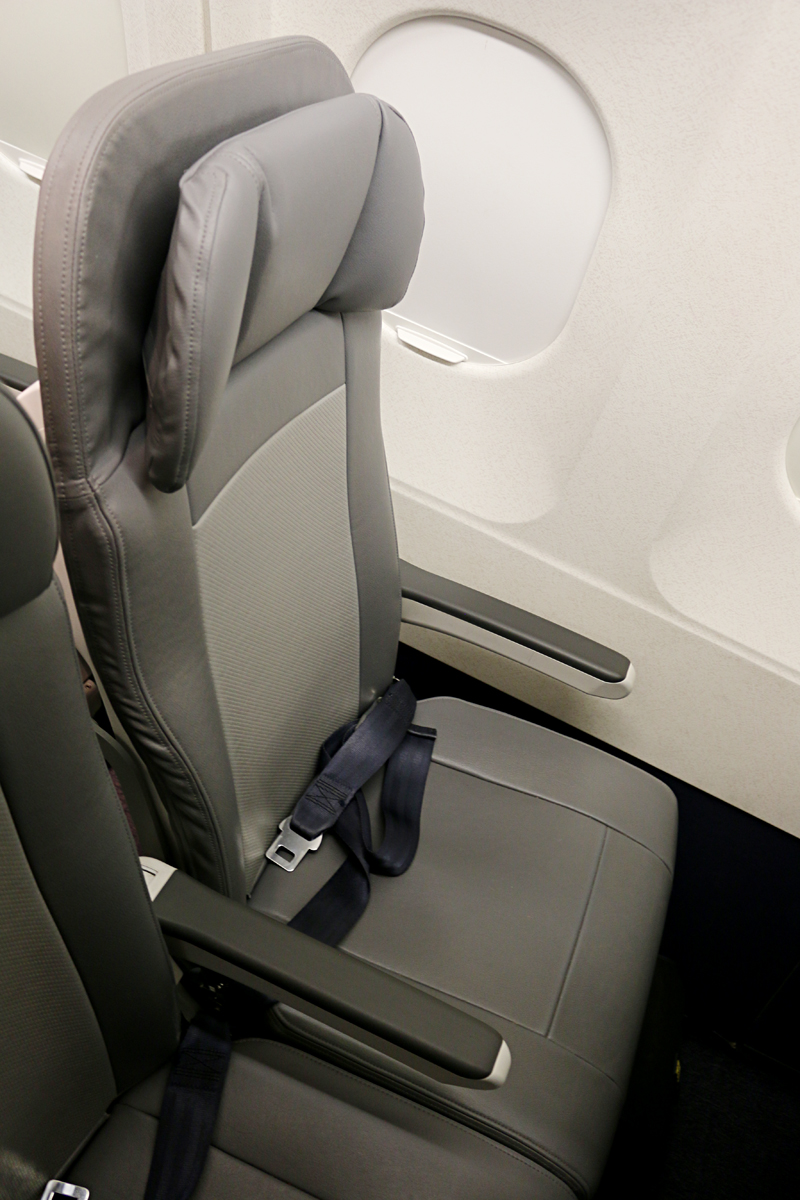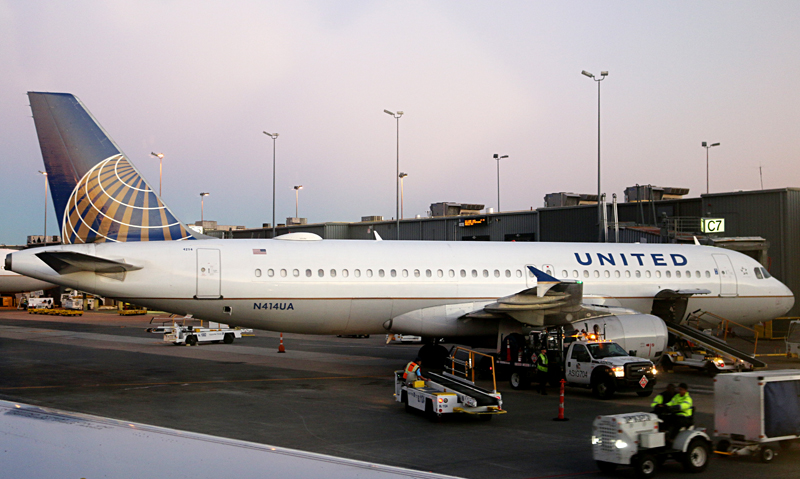Y ears have passed since I last flew as a passenger aboard an airplane operated by United Airlines — not for any other reason that I simply had not felt compelled with the opportunity to do so — but the airfare of $116.20 round trip including taxes and fees between Atlanta and Washington Dulles International Airport was the least expensive of its competitors and I had a conference in the District of Columbia; so I snagged the deal…
…which, by the way, is still available for select dates through Monday, December 19, 2016 — unless you would like to take advantage of an airfare of $86.18 round-trip on Spirit Airlines between Atlanta and Baltimore, which did not work for me for a number of reasons.
My First Flight With United Airlines in Years
One thing which I have always liked about United Airlines since I became based in the Atlanta area is that their flights operate out of gates in Concourse T — meaning that I can always walk to the gates and never have to consider taking the airport train which transports people between concourses and baggage claim. The experience with American Airlines used to be similar until its merger with US Airways, whose flights always departed from Concourse D — and still do today as part of American Airlines.
I arrived at gate T13 for the departure of the airplane for the flight on which I was to become a passenger. The first group of passengers — which included those who were assigned seats in the first class cabin; as well as members of the MileagePlus program who achieve Global Services elite level status — boarded first in their own lane; followed by other passengers who earned various levels of Premier elite level status and boarded in a different lane designated just for them.

As the passengers were boarding, I noticed that they were scanning their own boarding passes prior to boarding the aircraft — regardless of whether the boarding pass was physically printed on a piece of paper; or digitally displayed on the screens of portable electronic devices.

I decided to take a photograph of this — and at the last second, one of the gate agents decided to have a little fun and pose for the photograph. I explained to her that passengers of Delta Air Lines usually do not have the opportunity to scan their own boarding passes, as my experience is chiefly from one of my brief stints as gate agent for a day. She explained to me that they encourage this policy because they do not want to be responsible for breaking a portable electronic device in the unlikely event that it is accidentally dropped while scanning an electronic boarding pass. That made sense to me…
…although almost immediately after that explanation — as if on cue — one passenger almost dropped his portable electronic device as he scanned his electronic boarding pass. That was a close call.
Boarding for everyone else was through the open area, as no one was permitted to use either of the designated special lanes — I suppose to keep them clear should passengers who qualify to use those lanes arrive at the gate late.
I boarded the Airbus A320 aircraft and passed by the first class cabin, which appeared to be typical of those found in airplanes used for domestic flights. I did like the idea of coat hooks located on the bulkhead walls at the rear of the first class cabin; although I was unsure as to whether the flight attendants hang the garments as usual. One drawback is that the garments — which had tags attached to them with the seat assignments of their owners written on them — are out in the open and not hidden in a closet.
The Seat
After passing through the Economy Plus section — which did not look like anything special to me — I arrived at my seat.

The seat to which I was assigned was located next to the window; and it appeared to be made out of leather. It also had an adjustable headrest.

I thought that the seat was reasonably comfortable — especially as the legroom was acceptably ample for me.

After every seat was filled with passengers, the boarding door to the aircraft was closed; and the airplane departed on time as the lead flight attendant recited the usual set of announcements — including the addition of the current ban on Samsung Galaxy Note7 devices anywhere aboard the airplane.
The Snack
The in-flight service eventually began after I completed greater than half of the crossword puzzle found in the Hemispheres magazine — in ink with a pen — and I pulled down the tray table, which was not spotlessly clean.

The snack was a small bag of — well — some mixture of nondescript crunchy snack items whose taste had an odd hint of seafood.

I tore open the bag to see exactly what I was eating…

…and then I reviewed the ingredients. Interestingly, I was right on the money with that hint of seafood, as seaweed was the fourth ingredient of this snack mix, which was comprised of Oriental rice crackers and sesame sticks; and contained such odd ingredients as soy sauce and beet powder.

Aside from the sesame sticks — whose taste and texture I found to be as interesting as dried old glue — the snack was not half bad; but I had to wonder who arrived at the decision to serve this snack mix as the only option to an airplane packed with passengers…
…as well as why. This snack mix would never be my first choice — nor would it be something I would ever crave to eat.
Thank goodness my cup of orange juice with no ice arrived to wash down the odd flavors. Delta Air Lines serves a larger cup with a greater amount of beverage — but the difference in airfare did not justify that larger serving, as I could purchase at least a dozen 59-ounce containers of orange juice at a supermarket for what I saved on airfare for this relatively short flight.
I remember the days when those containers actually held a half gallon of orange juice — but I digress yet again, as usual.
I did have a little chuckle to myself when I saw that a coffee pot used to store items on the drink cart proudly emblazoned the logo of Continental Airlines — the airline with which United Airlines merged; as well as the airline on which I once was a member of the OnePass frequent guest loyalty program of which I had earn top-tier elite level status.
Ahh, memories.

If I really had to absolutely nitpick about an otherwise pleasant flight, the window shade next to my seat was missing a handle for some reason. Other than the tray table, the airplane was relatively clean and comfortable; and the flight actually was early upon arrival of the airplane at my destination.
Return Flight

When I arrived at the gate, I mistakenly thought that the flight was for Southwest Airlines, as I saw the signs which pointed out which lane each group should use.
Unlike on the outbound flight, the gate agents were scanning the boarding passes instead of the passengers doing the scanning themselves.

On the way to the runway, the trademark odd droopy wings of a parked Antonov AN-124-100 transport aircraft caught my eye as I looked out the window. According to the official Internet web site of this airplane, “It is the biggest series heavy lifter in the world.” Note all of the wheels at the bottom of the airplane.
In-Flight Entertainment
No in-flight entertainment option was built into the aircraft — had it been, earbud headphones would have been distributed free of charge to passengers seated in all cabin classes and I probably could have once again listened to the pilots and air traffic controllers speak live on Channel 9 — but in-flight entertainment was available virtually when traveling with a portable electronic device.

I had downloaded the official mobile software application program of United Airlines onto my portable electronic device. There was an ample selection of movies, television programs and shows for children available; but I was not interested in any of them…

…rather, I preferred the information screen, which displayed a map of where the airplane was located and remaining flight time in real time…

…as well as information displayed in real time using both imperial and metric measurements — such as the speed of the aircraft; the wind speed; the outside temperature; and the altitude of the airplane.
A rare occurrence happened at the conclusion of the flight: the pilot “greased” the landing — meaning that had my eyes been closed, I would have never known that the airplane landed. I actually accomplished a “greased” landing while piloting a Boeing 777-200 flight simulator and am still quite proud of that. I complimented and congratulated the captain of the aircraft upon leaving the airplane; and he looked up from working in his seat in the cockpit and smiled, as he was pleasantly surprised and grateful. I suppose I made his day that I actually noticed how smoothly the airplane landed and let him know.
Other than that, the return flight was generally the same experience — type of aircraft, snack and all. Although the airplane departed from the gate nine minutes late, it actually arrived at its destination early — despite it originally supposed to arrive seven minutes late.
Summary
When traveling on a short flight of fewer than 90 minutes, the choice of airline can basically be based primarily on price…
…and despite the negative experiences about which I have either heard or read — and while there was nothing spectacular or memorable which occurred — there was nothing significantly bad about my experiences as a passenger of United Airlines on the two flights which comprised the round trip.
I personally have never had anything against United Airlines; but the opportunity finally presented itself this time for me to be a passenger.
Sometimes trying something different is good…
All photographs ©2016 by Brian Cohen.

